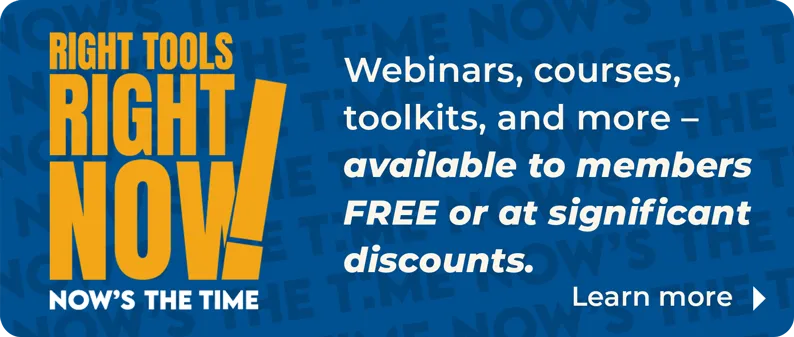By Carolyn Schwaar
Do you overburden your members with e-mail? This convenient and cost-effective way to communicate with members is often overused, associations report, to the extent that members block association e-mail and plead to be opted-out. So what’s the critical balance between keeping members informed and overloading their inboxes?
Bundle Your Message
Many associations have found that an e-newsletter containing all association news and reports, sent at the same time every week or month, is the best way to deliver information without risk of overload.
“Because we have a weekly e-mail newsletter, we’re able to limit our e-mail to members to about four times a month,” says Deanna Devey, communications director of the Utah Association of Realtors®. “Only rarely do we send out stand-alone e-mail, so when we do, the message really stands out.”
There are exceptions to the newsletter rule, however. “I send communications to members outside of the weekly e-news if there are security alerts or updates that need to go out to membership immediately, such as board office closings due to weather,” says Mary C. Yang, communications and marketing coordinator at the St. Paul Area Association of Realtors®, Minn.
“If we sent our general membership more than two e-mails a week, they’d think we were spamming them,” explains Steve Klaniecki, director of communications and marketing, Washington Realtors® Association. “We will break that rule when we have an urgent call-for-action on a political issue or if there is a hot educational offering in a particular zip code.”
Coordinate with Others
In larger organizations, coordination among departments is essential to ensure that members are not being bombarded with association e-mail. “My unwritten policy is to filter the requests from association departments and members and put most of the newsworthy items in the e-mail newsletter,” says Devey. “This has helped us tremendously to keep e-mail traffic low.”
Likewise, at the Washington Realtors® Association, the communications department coordinates with the government affairs department and the education department to avoid overloading members. “We also insisted on separate opt-out features for each department. With this option in place, a member can opt-out of one publication without losing the other publications they are interested in,” says Klaniecki.
Ask Members
Conducting member surveys is one way associations can gauge whether their communications are too much or just right. “From our survey we found that members prefer to hear from us in one weekly update versus biweekly or monthly,” says Yang.
It’s also important to remember that every association’s membership is different. Eric Berman at the Massachusetts Association of Realtors® says he found out by chance that the sporadic e-mail blasts he sends—announcing sales from affiliated vendors, education offerings, and events—were actually more popular than his carefully crafted biweekly
e-mail newsletter. “I kept hearing from our vendors that they had a tenfold greater response from members if their product was mentioned in the blasts versus the e-newsletter.”
Berman attributes the popularity of the blasts to their “call-to-action” nature. “The blasts are always about a deadline, a limited offer, or time running out on something,” he says.
Respect Members’ Privacy
Showing members that you respect their time and privacy by having easy and effective methods to subscribe and unsubscribe from association communications is essential.
“We think we have better open rates and fewer spam reports because of this [privacy] policy,” says Klaniecki, who has opt-out provisions on his blasts and e-newsletters but has very little opt-out and no complaints of e-mail overload from members.
“We definitely allow members to opt-out of our communications at any point,” says Yang. “If they complain, I have a standard letter saying that I am opting them out but that other members find that information very useful and that all our updates, like dues deadlines, board office closings, or urgent MLS updates, are done only via e-mail.”








